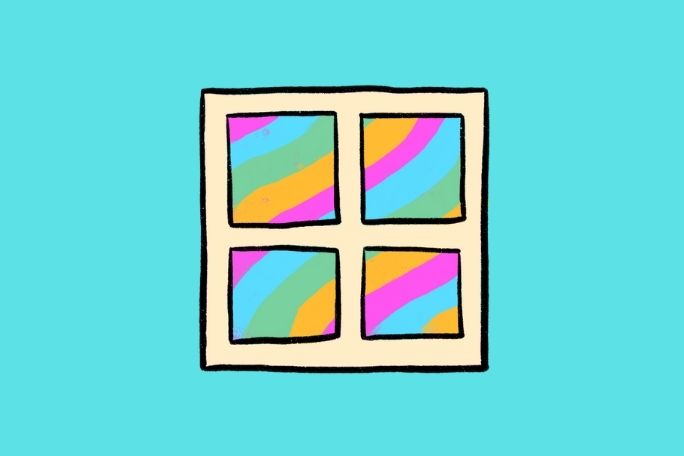Lesson summary
Students explore the value of creating a vision for the future. They begin by exploring the difference between a vision and a dream. They then work collaboratively to create a vision board for the future of their school, based on AIME’s values. Following this, students will create a personal vision board for themselves, based on what they would like for themselves in ten years’ time. There are also opportunities for students to share their visions with an audience.
Learning intentions:
Students will...
- understand the difference between a dream and a vision
- recognise the value of creating a vision for the future
- understand why a vision board is a useful tool for imagining what they would like to see in the future.
Success criteria:
Students can...
- create a vision board
- communicate ideas visually and in written form
- work independently and collaboratively
- communicate ideas to an audience.
Lesson guides and printables
Lesson details
Curriculum mapping
Australian curriculum content descriptions:
Year 5 English:
- Use interaction skills, for example, paraphrasing, questioning and interpreting non-verbal cues and choose vocabulary and vocal effects appropriate for different audiences and purposes (ACELY1796).
- Plan, draft and publish imaginative, informative and persuasive print and multimodal texts, choosing text structures, language features, images and sound appropriate to purpose and audience (ACELY1704).
- OPTIONAL – Use a range of software including word processing programs with fluency to construct, edit and publish written text, and select, edit and place visual, print and audio elements (ACELY1707).
Year 6 English:
- Use interaction skills, varying conventions of spoken interactions such as voice volume, tone, pitch and pace, according to group size, formality of interaction and needs and expertise of the audience (ACELY1816).
- Plan, draft and publish imaginative, informative and persuasive texts, choosing and experimenting with text structures, language features, images and digital resources appropriate to purpose and audience (ACELY1714).
- OPTIONAL – Use a range of software, including word processing programs, learning new functions as required to create texts (ACELY1717).
This lesson is part of a wider program: IMAGI-NATION{TV}
Level of teacher scaffolding: Medium – facilitate class discussions, lead students in group and individual tasks.
Syllabus outcomes: EN3-1A, EN3-2A
General capabilities: Literacy, Personal and Social Capability
Resources required
- About AIME Factsheet (optional)
- Butchers paper and marker pens
- Device capable of presenting a video to the class
- Devices with access to online vision board creating tool, e.g. Padlet
- Materials for vision boards:
- OPTION A – Physical vision board –
- A3-sized paper or cardboard
- A range of old newspapers, magazines, catalogues, and other printed materials that students can cut up
- Art-making materials, such as marker pens, pencils, glue, scissors, sticky tape
- OPTION B – Online vision board
- OPTION A – Physical vision board –
- Student Worksheets – one copy per student
Skills
This lesson is designed to build students’ competencies in the following skills:
- Collaboration
- Communication
- Creativity
- Initiative
- Social skills
Additional info
This lesson has been developed in partnership with AIME. AIME is an Imagination Factory that since 2005, has been creating pop-up Imagination Factories on university campuses around the world to unlock the internal narrative of marginalised kids, taking them from a world that tells them they can’t to a world that tells them they can. Kids who experience the Imagination Factory have gone on to achieve educational parity, rise up as entrepreneurs, and take on a whole new mindset that prepares them for success.
AIME created IMAGI-NATION{TV} & the IMAGI-NATION{CLASSROOM} experience to put a mentor in the home every day during the tough times of COVID-19 and beyond. It’s a daily TV show broadcast live on the internet, and it’s a gift for teachers, parents and kids to help make sense of today and imagine tomorrow.
The pursuit is to elevate knowledge; every guest we bring on knows something and has wisdom to share. This show is not just about entertainment to pass the time. We want to remake the mould for the modern hero – from beauty to brains, from selfies to self-knowledge, from hashtags to hope. IMAGI-NATION{TV} is seeking to unlock the best in every single one of us; to inspire a generation of heroes in the form of mentors who fight for a fairer world.


Welcome back!
Don't have an account yet?
Log in with:
By signing up to Cool.org you consent and agree to Cool's privacy policy to
store, manage and process your personal information. To read more, please see
our privacy policy here(Opens in new tab).
Create your free Cool.org account.
Many of our resources are free, with an option to upgrade to Cool+ for premium content.
Already have an account?
Sign up with:
By signing up to Cool.org you consent and agree to Cool's privacy policy to
store, manage and process your personal information. To read more, please see
our privacy policy here(Opens in new tab).